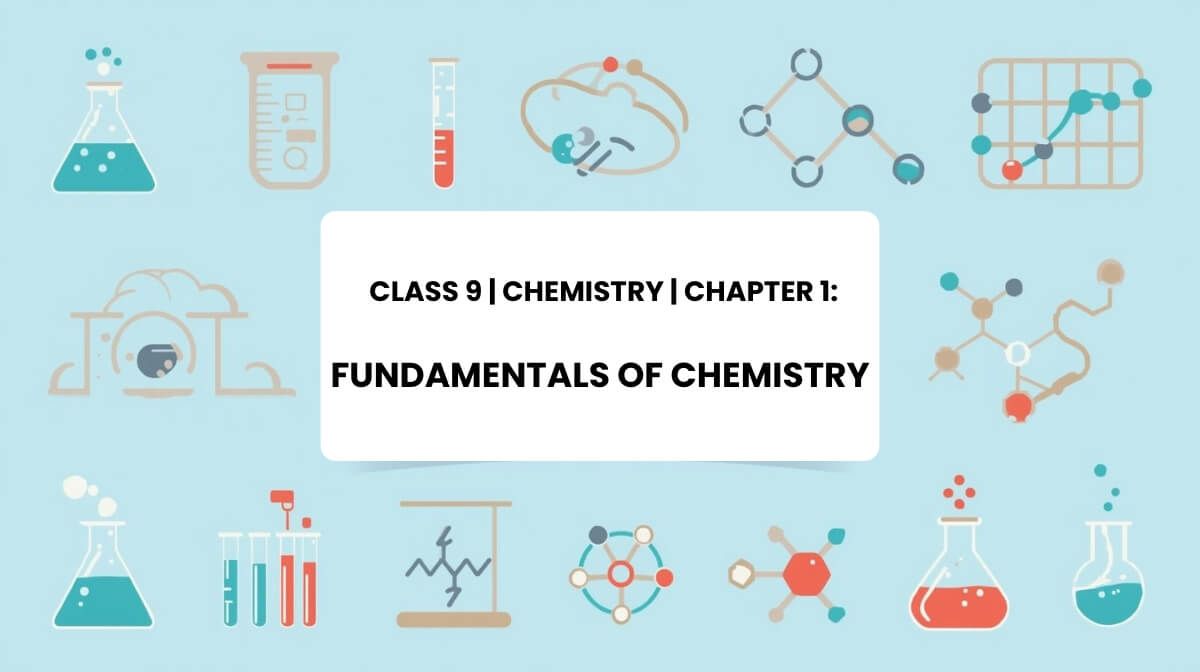Chapter 1: Fundamentals of Chemistry introduces the basic concepts that form the foundation of chemistry. It explains the nature and classification of matter, differences between elements, compounds, and mixtures, and the significance of chemical symbols and formulas. The chapter also highlights the importance of chemistry in understanding and improving our daily lives.
1. What is the basic unit of a chemical element?
- A. Molecule
- B. Atom ✅
- C. Compound
- D. Ion
Explanation: An atom is the smallest particle of an element that retains its chemical properties.
2. Which of the following is a compound?
- A. Oxygen
- B. Water ✅
- C. Gold
- D. Sulphur
Explanation: Water (H₂O) is made from hydrogen and oxygen chemically combined in a fixed ratio.
3. Which branch of chemistry deals with the study of carbon compounds?
- A. Inorganic chemistry
- B. Organic chemistry ✅
- C. Physical chemistry
- D. Biochemistry
Explanation: Organic chemistry studies compounds mainly made of carbon.
4. Brass is an example of a:
- A. Compound
- B. Mixture ✅
- C. Element
- D. Alloy only of iron
Explanation: Brass is a mixture (alloy) of copper and zinc.
5. What is the chemical symbol for Sodium?
- A. So
- B. Na ✅
- C. Sd
- D. Sm
Explanation: The symbol Na comes from the Latin word ‘Natrium’.
6. Which of these is a heterogeneous mixture?
- A. Sugar solution
- B. Sand in water ✅
- C. Air
- D. Vinegar
Explanation: In heterogeneous mixtures, components remain separate, like sand and water.
7. Who is considered the father of modern chemistry?
- A. John Dalton
- B. Antoine Lavoisier ✅
- C. Mendeleev
- D. Avogadro
Explanation: Lavoisier established the law of conservation of mass and systematized chemical nomenclature.
8. Which of the following is an element?
- A. Water
- B. Iron ✅
- C. Salt
- D. Carbon dioxide
Explanation: Iron is a pure substance made of only one type of atom.
9. Which of the following is a physical property?
- A. Melting point ✅
- B. Reactivity with acids
- C. Flammability
- D. Corrosiveness
Explanation: Physical properties can be observed without changing a substance’s identity.
10. Which term describes the smallest particle of a compound that still has its properties?
- A. Atom
- B. Molecule ✅
- C. Ion
- D. Mixture
Explanation: Molecules are formed when atoms are chemically bonded together.

